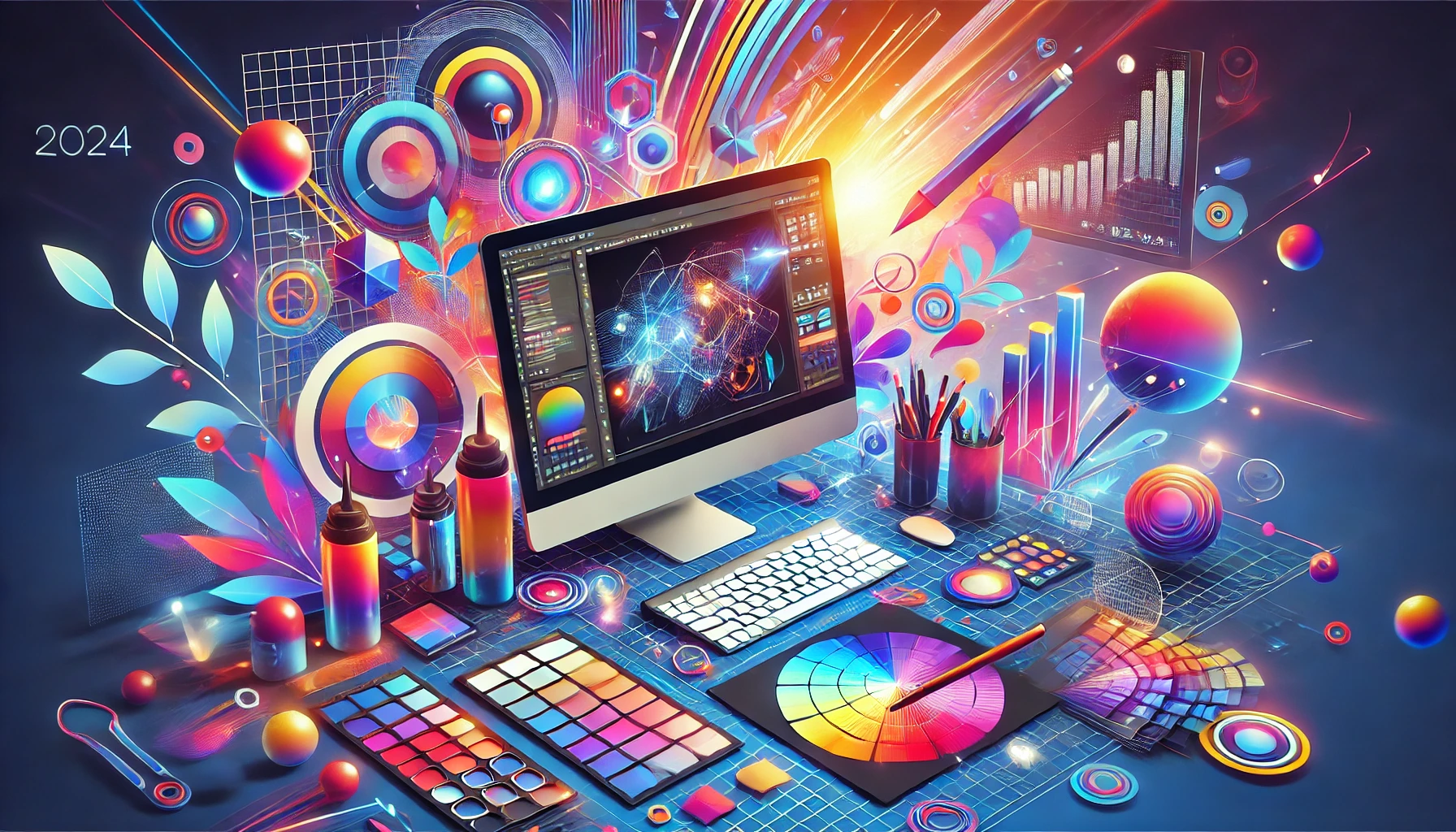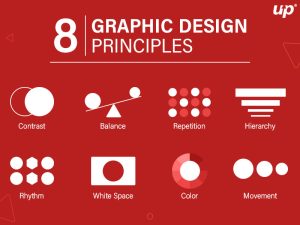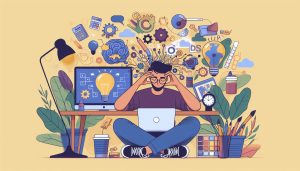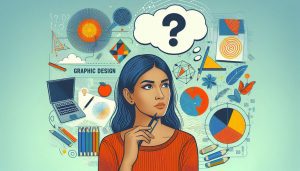Graphic Design 101: A Beginner’s Guide to Unlocking Creativity in 2024
- WebOps Platforms Bug Tracking & Feedback Software Web Development & Design


In 2024, graphic design continues to evolve at a rapid pace, driven by emerging technologies and creative trends. Whether you’re aspiring to become a designer or simply want to understand the essentials, this guide will help you unlock your creativity and embark on your graphic design journey. We’ll break down the basics, key tools, and techniques to help you stand out in today’s dynamic design landscape.
What is Graphic Design?
Graphic design is the art of visually communicating ideas and messages through images, typography, and layout. It involves creating visual content to express thoughts, advertise products, and inform audiences. In 2024, this field is more accessible than ever, thanks to a wide range of digital tools and resources.
Why is Graphic Design Important?
- Effective Communication: Visuals often speak louder than words. Graphic design helps convey complex information in an engaging and digestible manner.
- Brand Identity: Consistent and well-designed graphics help establish a strong brand identity, improving recognition and customer loyalty.
- User Experience (UX): Design influences how users interact with websites, apps, and products, enhancing user satisfaction.
- Emotional Connection: Great design can evoke specific emotions, building a stronger connection with your audience. This is crucial for storytelling, marketing, and brand loyalty.
- Problem-Solving: At its core, design is about solving visual problems. Graphic designers combine creativity with logic to create solutions that work both aesthetically and functionally.
Getting Started with Graphic Design in 2024
1. Understanding Basic Design Principles
Before diving into tools and techniques, you need to grasp the core design principles. These will be the foundation of everything you create:
- Balance: Creating visual stability in your design by distributing elements evenly.
- Contrast: Highlighting differences between elements to guide the viewer’s attention.
- Alignment: Keeping your design organised and making it visually appealing by properly aligning text and graphics.
- Repetition: Using repeating patterns or elements to create consistency.
- Hierarchy: Guiding the viewer’s eyes from the most important to the least important elements through size, colour, and placement.
- Proximity: Grouping related elements close together to create a clear relationship between them. This enhances readability and user experience.
- White Space: Also known as negative space, this refers to the empty space around design elements. White space helps prevent clutter and gives the design room to “breathe.”
- Emphasis: Making certain areas or elements stand out by using contrasting sizes, colours, or placement. Emphasis helps direct the viewer’s focus to the most critical parts of the design.


Photo credit: Dribbble – 8 Important Principles of Graphic Design
2. Essential Tools for Graphic Design
In 2024, many tools are available to streamline the design process. Below are some must-have tools for beginners:
Adobe Creative Cloud
Adobe Creative Cloud continues to be the industry standard, offering powerful tools like Photoshop, Illustrator, and InDesign. These are great for everything from photo editing to creating vector art and layouts.
Canva
If you’re new to graphic design, Canva is a fantastic tool for beginners. It’s an easy-to-use online platform offering thousands of templates and drag-and-drop features. It’s perfect for creating quick designs like social media posts, presentations, and flyers.
Figma
For those interested in UI/UX design, Figma is a collaborative web-based tool that allows you to design user interfaces, prototypes, and wireframes. It’s essential for web and app design.
Procreate
For digital artists, Procreate on the iPad is an excellent tool for creating illustrations and artwork. It’s intuitive, powerful, and perfect for hand-drawn graphics.
3. Learning Graphic Design Skills


Graphic design isn’t just about using tools—it’s about mastering the skills that bring your vision to life. Here are some key areas to focus on:
Typography
Typography involves selecting the right fonts and arranging them in a way that enhances readability and aesthetic appeal. Understanding typefaces, font pairing, and text hierarchy is crucial for creating professional designs.
Colour Theory
Colours evoke emotions and set the tone of a design. As a beginner, learning colour theory—the art of combining colours effectively—is fundamental. Use tools like Adobe Color to experiment with complementary and analogous colours.
Layout and Composition
Arranging text and images on a page or screen is an essential skill. Grid systems help designers maintain alignment and structure. Practising layouts ensures your design is not only visually appealing but also functional and user-friendly..
4. Developing Your Creative Process
Designing is not just about technical skills; it’s about creativity and problem-solving. Here’s how you can develop a creative workflow:
Research and Inspiration
Start by exploring trends, designs, and art from other creators. Sites like Behance and Dribbble offer plenty of inspiration. Analyse what you like and why it works.
Leveraging Design Communities
- Design Communities: Join online communities such as Reddit’s Graphic Design or Designers Guild to share your work, receive feedback, and network with other designers.
- Collaborative Platforms: Tools like Milanote help you organise mood boards, sketches, and references collaboratively, which is especially useful for teams or client-based work.
Brainstorm and Sketch
Before jumping into design software, spend time brainstorming and sketching ideas. This allows you to explore concepts freely without worrying about the technicalities.
Practice, Experiment, and Refine
The more you practise, the better you become. Don’t hesitate to experiment with new styles, techniques, or tools. Seek feedback, refine your designs, and continuously improve.
Building a Portfolio
As you practice, start compiling a portfolio of your best work. This portfolio will be crucial for showcasing your skills to potential employers or clients. Don’t wait for client work—initiate personal projects that reflect your passion and creativity. These are often the most impressive pieces in a portfolio.
5. Mastering Responsive Design for Multiple Devices
In today’s digital world, people interact with designs across various devices, from smartphones and tablets to desktops and even smartwatches. This shift makes responsive design a critical skill for any graphic designer in 2024. Responsive design ensures that your work looks good and functions well regardless of screen size or resolution, enhancing the overall user experience.
Key Aspects of Responsive Design:
- Flexible Layouts: Use fluid grids that automatically adjust to fit the screen size. Avoid fixed-width elements that break the design on smaller screens.
- Scalable Images: Ensure that images resize proportionally to avoid distortion. Use responsive image techniques like CSS
max-width: 100%to scale images correctly. - Typography Adjustments: Choose fonts and sizes that are legible across devices. You can use relative units like “em” or “rem” to make text resize smoothly based on the device’s screen.
- Media Queries: Media queries in CSS allow you to apply different styles depending on the device’s width or height, creating breakpoints for different devices.
- Mobile-First Approach: A popular strategy is to design for the smallest screen first and then progressively enhance the design for larger screens. This ensures a streamlined and functional design on all platforms.
Understanding how to implement responsive design is vital, especially if you work on web-based projects or mobile applications. A tool like Figma offers responsive design features, allowing you to create prototypes and mockups that automatically adapt to different screen sizes.
6. How to Stay Creative and Avoid Burnout as a Designer


Creativity is a designer’s most valuable asset, but with the pressures of deadlines, client expectations, and an ever-evolving design landscape, burnout is a common challenge. In 2024, maintaining creativity while avoiding burnout requires a balance of mindset, habits, and self-care.
Tips for Sustaining Creativity and Managing Burnout:
- Take Regular Breaks: Stepping away from the screen can refresh your mind. Consider using productivity methods like the Pomodoro Technique to work in short, focused bursts followed by breaks.
- Collaborate with Others: Working with other designers or creative professionals can provide fresh perspectives and help overcome creative blocks. Platforms like Dribbble and Behance allow for collaborative projects and feedback exchange.
- Pursue Personal Projects: Engaging in non-client, passion-driven work allows you to experiment without the constraints of deadlines or briefs. Personal projects often ignite creativity and can be highly rewarding.
- Set Boundaries: Overworking can lead to burnout. Ensure you set clear work-life boundaries and make time for hobbies or activities outside of design.
- Stay Inspired: Regularly explore new design trends, attend workshops, or browse design communities. Inspiration is everywhere, from design blogs to everyday surroundings.
- Manage Your Workload: Prioritizing tasks and learning to say “no” when necessary can help you avoid taking on more than you can handle. Time management tools like Trello or Asana can help streamline your projects and reduce overwhelm.
By implementing these strategies, you can sustain creativity, manage stress, and enjoy a fulfilling and balanced design career without burning out.
Emerging Trends in Graphic Design for 2024
As we move further into 2024, certain trends are shaping the future of graphic design:
- Minimalism and Bold Colours: Stripped-down designs with vibrant, eye-catching colours continue to dominate. Simplicity is key to conveying messages quickly.
- 3D Design and Animation: With advancements in 3D software, designers are incorporating more 3D elements and animations into websites, apps, and advertisements.
- AI-Assisted Design: Artificial intelligence (AI) is becoming a helpful tool in automating tedious tasks, generating templates, and even assisting in the creative process.
- Sustainability and Eco Design: In a world increasingly aware of environmental issues, sustainable design practices are gaining popularity. This involves using eco-friendly materials in print design and promoting digital alternatives to reduce waste.
Frequently Asked Questions About Graphic Design


1. Can I Learn Graphic Design Without a Degree?
Absolutely! Many successful graphic designers are self-taught or have taken short courses online. Platforms like Skillshare, Udemy, and LinkedIn Learning offer affordable graphic design courses that you can complete at your own pace. The key is to practice, build a portfolio, and continually improve your skills.
2. How Do I Choose the Right Design Software as a Beginner?
As a beginner, choosing the right software depends on your design goals. If you want to focus on digital illustration, Procreate might be ideal. If you’re aiming for print design, Adobe Illustrator or Affinity Designer are great options. For social media graphics or quick designs, Canva is highly user-friendly. Try out free trials to see which tools you feel most comfortable with.
3. What Are the Most In-Demand Skills for Graphic Designers in 2024?
In 2024, graphic designers with expertise in UI/UX design, motion graphics, and 3D design are in high demand. Additionally, proficiency in collaboration tools like Figma and Adobe XD is valuable for working in design teams or on client projects.
4. How Can I Find Clients or Job Opportunities as a Graphic Designer?
Building a strong portfolio is the first step. Create accounts on platforms like Behance, Dribbble, and LinkedIn to showcase your work. Networking in online design communities and participating in design contests can also help you get noticed by potential clients or employers.
5. How Can I Stay Updated with the Latest Design Trends?
To stay current, regularly visit design inspiration sites like Awwwards, Designmodo, and Smashing Magazine. Follow influential designers on social media and subscribe to design newsletters. Engaging with these resources will ensure you’re always up to date with the latest tools, trends, and techniques.
Conclusion: Unlocking Your Creative Potential with Graphic Design
Graphic design in 2024 opens new doors for creativity, offering an exciting blend of traditional design principles and cutting-edge tools. When embraced with an open mind and a willingness to learn, graphic design can significantly enhance your ability to communicate visually, making your work stand out in a crowded digital space.
As with any creative endeavour, success in graphic design lies in understanding the balance between technique and artistry. By integrating the right tools and staying updated on industry trends, you can develop a strong design workflow that reflects your unique style.
Remember, the key to mastering graphic design is to build on foundational skills while embracing new technologies and creative approaches. As you continue to design and refine your abilities, let graphic design be your gateway to unlocking your full creative potential.
Ready to start your design journey? Dive into the world of graphic design today and discover how you can transform ideas into stunning visuals in 2024 by exploring a wide range of design and creativity tools through our featured resources.
Related Readings
For more insights into graphic design tools, trends, and career options, explore our other articles:
- Illustrator for Graphic Design: Benefits and Features
- Top Graphic Design Software: Identifying Leading Tools
- AI vs. Graphic Designers: Assessing the Impact
- Free Graphic Design Tools for Websites: Accessible Design Resources
- Types of Graphic Design: Examples and Top Career Options in 2024
Remember, while tools and resources can enhance your creative process, it’s your unique vision and skills that bring designs to life. Happy designing!





